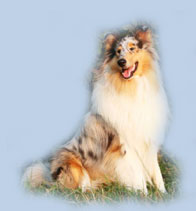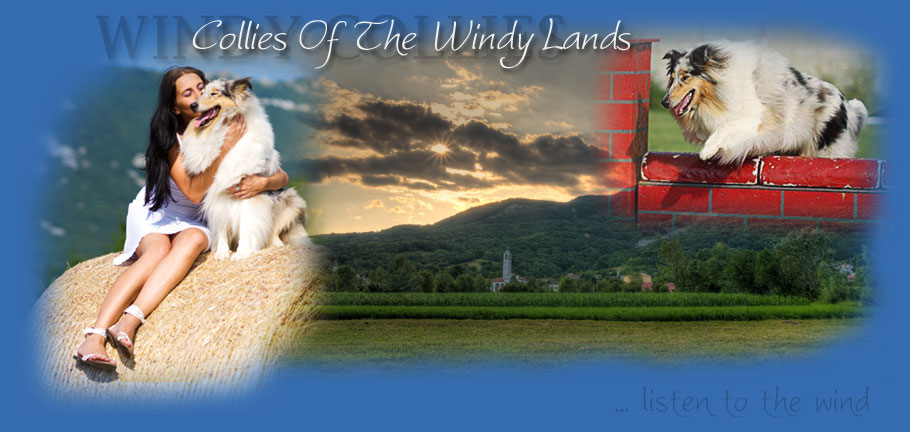|
|
|||
|
|

A sheepdog A herding dog, also known as a stock dog, is a type of pastoral dog that has been trained in herding. Their ability to be trained to act on the sound of a whistle or word of command is renowned throughout the world.
A Blue Pearl Of The Holy Mountain Herding dogs are known as working dogs irrespective of their breeding. Some herding breeds work well with any kind of animals; others have been bred for generations to work with specific kinds of animals and have developed physical characteristics or styles of working that enhance their ability to handle these animals. Commonly mustered animals include cattle, sheep, goats and reindeer, although it is not unusual for poultry to be handled by dogs.
Aim at Glory Of The Holy Mountain (5 months old) Herding behaviour All herding behavior is modified predatory behavior. Through selective breeding, man has been able to minimize the dog's natural inclination to treat cattle and sheep as prey while simultaneously maintaining the dog's hunting skills, thereby creating an effective herding dog. Dogs can work other animals in a variety of ways. Some breeds, such as the Australian Cattle Dog, typically nip at the heels of animals (for this reason they are called heelers) and the Cardigan Welsh Corgi and the Pembroke Welsh Corgi were historically used in in a similar fashion in the cattle droves that moved cattle from Wales to the Smithfield Market in London but are rarely used for herding today.
In the wings of hope KoToRa
Other breeds, for example the Border Collie or Rough / Smooth Collie get in front of the animals and use what is called strong eye to stare down the animals; they are known as headers. The headers or fetching dogs keep livestock in a group. They consistently go to the front or head of the animals to turn or stop the animal's movement. The heelers or driving dogs keep pushing the animals forward. Typically, they stay behind the herd. The Australian Kelpie and Australian Koolie use both these methods and also run along the backs of sheep so are said to head, heel, and back. Other types such as the Australian Shepherd, English Shepherd and Welsh Sheepdog are moderate to loose eyed, working more independently.
Essanjay Encore
Herding instincts and trainability can be measured when introducing a dog to livestock or at noncompetitive herding tests. Individuals exhibiting basic herding instincts can be trained to compete in herding trials.
Competitive herding The competitive dog sport in which herding dog breeds move animals around a field, fences, gates, or enclosures as directed by their handlers is called a sheepdog trial, herding test or stockdog trial depending on the area. Such events are particularly associated with hill farming areas, where sheep range widely on largely unfenced land.
Wicani Touched by a dream |
||
|
Source: http://en.wikipedia.org/wiki/Herding_dog |
 |
||



